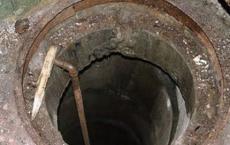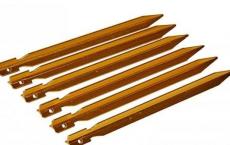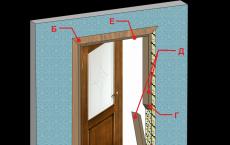What are pvc profiles and how to choose them correctly
Profile for PVC windows is the main element. It affects the functionality, reliability, durability of the structure. Despite the same appearance, the profiles are endowed with different properties, which must be chosen very carefully.
What are the designs?
Currently, there are a large number of companies producing a variety of. They can differ significantly from each other even from one manufacturer, not counting competitive products. What is the difference and is it worth paying more?
There are a variety, a comparison of which will help the buyer make the right choice. They are a constructive basis, frames and sashes are made of them. The material can be used different: wood, metal-plastic, aluminum, polyvinyl chloride. The latter is the most popular: it is equipped with special steel inserts that make the product more durable and rigid. Air cavities help achieve good heat and sound insulation. Some manufacturers fill these cavities with nitrogen, so that the windows do not fog up during temperature changes. PVC profiles for windows must comply with Russian GOST 30673-99 or European EN 12608 SR.
PVC window profiles of all manufacturers are divided into the following categories:
- Class A: characterized by an outer wall dimension of 2.8 mm. Inside the thickness does not exceed 2.5 mm. Such a window provides good protection from weather conditions, perfectly keeps heat indoors.
- Class B: characterized by thinner walls: outer - 2.5 mm, inner - 2 mm. This sample copes worse with thermal insulation, but is suitable for use in warm climates or for glazing balcony rooms. It should be borne in mind that the risk of structural deformation increases by 15%.
- Class C: products that do not meet Russian and foreign standards. Since there is no certification, there are no strict requirements for it, and manufacturers can choose the thickness at their discretion. As a rule, such windows are cheap, but their quality suffers.
On sale you can find an objective PVC profile. It is used for glazing non-residential technical premises, commercial halls, as it is not able to retain heat efficiently, and there is a high probability of deformation. Externally, it is not much different from the standard. You need to pay attention to the presence of the Object designation: unscrupulous merchants sell such products for homes.
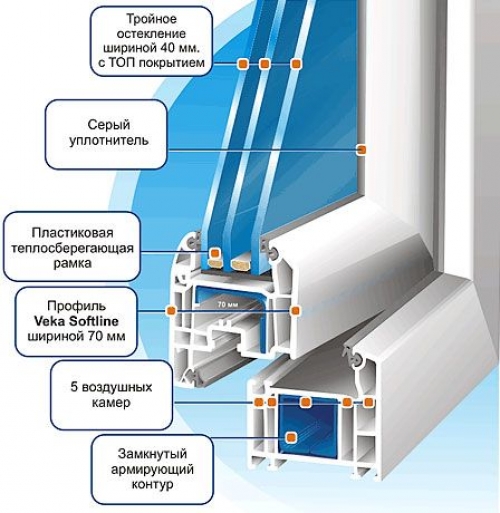
How to choose the right profile?
PVC window profiles have different characteristics, a comparison of which will help you make the right choice. Do not rely on the external characteristics of the products offered. Attention should be paid to the following properties:
- Homogeneity of the material. Choose those products whose plastic is characterized by the absence of flaws. It should be smooth, pleasant to the touch, uniform. If you notice that the surface is coarse-grained, most likely you are dealing with a fake made in violation of technology.
- The coating must be complete, without streaks, traces of paint.
High-quality windows are always factory marked. Look for it on the inside of the package. Firms put their stamps with the name, there may also be numbers: they mean the number of the shift that released the batch. The numbers indicate the number of the device that produced the window and the date of issue of the product. Fakes either do not have such numbers, or the designations are the same.
- Width. PVC window profile often has a standard parameter of 58 mm. Such a window is quite suitable for living rooms and is most often sold in stores. If desired, you can order a thicker version, the width of which will be 70 or 90 mm. The first option is relevant on the upper floors of skyscrapers, as it can withstand heavy loads and is able to effectively withstand strong winds. Useful in cold climates as well. The second option is considered a premium class, it has a high ability to isolate sound and heat, has high strength, but the mass of such a product is much higher, it is not recommended to install it everywhere.
If you decide to install a 90 mm PVC window profile, you should not order an oversized window. Its sash will have a lot of weight and will begin to sag. It is better to take two small ones or make a design with two wings that are independent of each other.
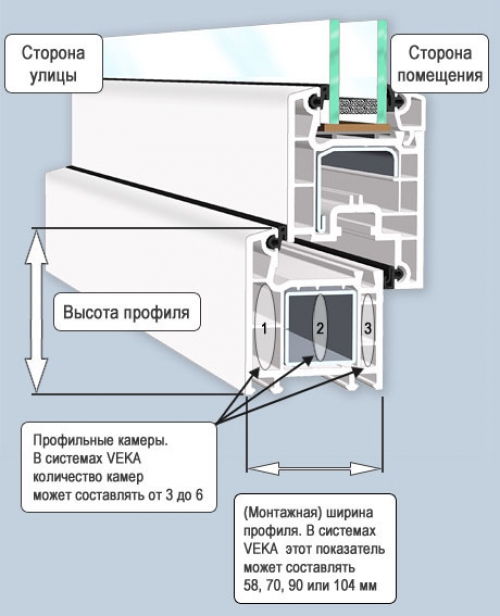
- Thickness. It can vary from 2.5 to 3 mm. However, putting such a design in heavy window blocks is not worth it. A large load may call into question its reliability.
- Number of air chambers. The profile, whose thickness is 58 mm, has two chambers, less often it is equipped with three. This is quite enough for good thermal insulation. More chambers are available for the thicker profile, which is 70mm. It can have up to 5 cameras. Such profiles are most often used as glazing in apartments of high-rise buildings. If necessary, you can order a 90 mm product, it can have up to 6 chambers. The level of soundproofing and heat inside the room depend on their number. However, it is worth remembering that the number of glasses and the dimensions of the profile also increase the mass of the structure, and the difference between the 3 and 4-chamber package is not very noticeable.
- The number of double-glazed windows. Different brands of plastic windows offer products with different amounts of these elements. Do not confuse them with air chambers. A double-glazed window is glass united with a frame and a sealant. Between them are air chambers, they can be filled with gas. The most lightweight is considered a single-chamber double-glazed window, since it includes a pair of glasses. Most often, such products are used for finishing terraces, balconies, loggias, since its mass is minimal, but such a window does not insulate heat well. For an apartment or a private house, it is better to use a thicker version that has three sheets of glass and two air chambers.
When choosing a double-glazed window, you should also be aware of such a feature of the product: the more glasses, the worse the light will pass through. In the server regions of the country, four-chamber products are installed, there is no need to install them in a warmer climate, this will only be an extra overpayment. If the frost does not exceed -40 degrees, the difference between this product and the three-chamber one will not be noticeable. 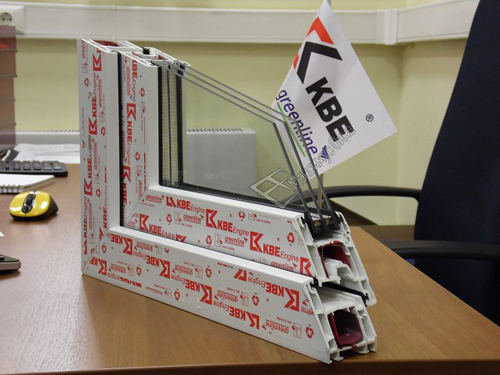
When choosing plastic windows, you must first of all pay attention to the quality of products, as well as make a purchase based on the purpose of the profile, the climatic conditions in which you live. It is worth remembering that too cheap material cannot be of high quality.

